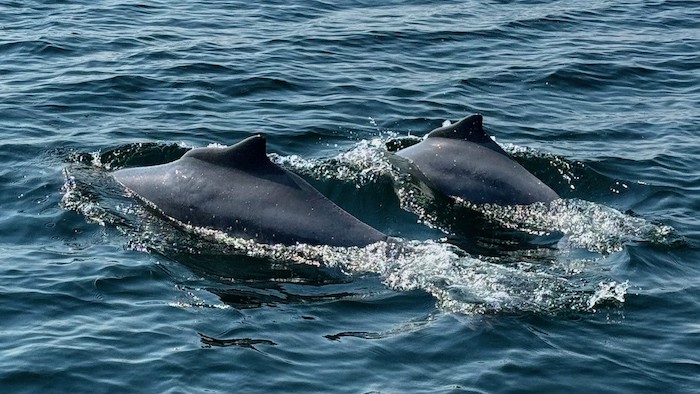
Muscat: The Environment Authority, in cooperation with the Directorate General of Agriculture, Fisheries and Water Resources in Musandam, the Ministry of Heritage and Tourism, and the Omani Environment Society, is continuing the work of the third phase of the project to survey marine mammal species in the Wilayat of Khasab in Musandam Governorate.
The project aims to document the natural distribution of marine mammals and their relative abundance off the coast of the National Natural Park in Musandam Governorate, record and map their locations to create a national database for them and record noticeable human activities that may affect them or their habitats, such as fishing activities, ship movement, etc.
Engineer Aida Bint Khalaf Al Jabri, head of the project team, said: "The work on the first day of the project showed an increase in the numbers of Indian Ocean humpback dolphins, which are found particularly in Khor Sham, compared to the previous stages of the project. A large number of these dolphins have been recorded in various locations in the creek. The Indian Ocean humpback dolphin is distinguished by the presence of a thick hump on its back, from which the dorsal fin, curved backwards, protrudes."
Al Jabri added that marine mammals play a major role in the ecosystem. Dolphins play an important role in combating infectious diseases and ensuring the reproduction of fish wealth by preying on old, sick fish. Whales also help maintain a stable food chain, and their droppings play a major role in absorbing carbon from the atmosphere. It is estimated that 400,000 tons of carbon are extracted annually from the atmosphere due to whales.
Engineer Noura bint Abdullah Al Shehhi, a member of the project team, said: "The third phase’s work included the use of modern and advanced technologies in collecting data with high accuracy and superior quality, most notably: a sonar device to detect depths, a device to determine wind speed, and a device to record the sounds of marine mammals, in addition to Modern, highly efficient photographic equipment."
She added that accounts have been created for the project on social media sites to facilitate communication with community members, introduce them to the project and its objectives, and share the results that have been recorded in addition to receiving data and coordinates recorded by citizens and visitors when viewing marine mammals.